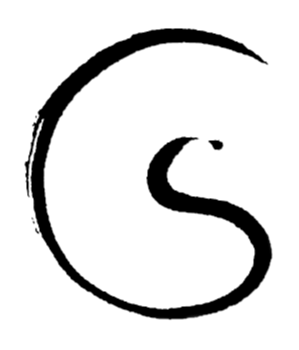
From movement arises form
Because each form is born from movement, question the sculpture: how do forms materialise from movements in space? Answers grow from an understanding that the form is in a process of becoming in time. Linear movements expand to become surfaces in motion that flowingly conquer space.
Similar to musical notation, flowing impulses of motion become material movements in sculpture. Thus, sculptures can be understood as recordings or documents of movement. In this way, we can discover a transition from the ,transitory’ arts that develop in time to the formative material arts such as architecture, sculpture and painting. When sculptures incorperate rhythmns and movements as a process or sequence, these rhythmns and movements are then transformed from the dimension of temporariness to that of duration and permanence.
Because they occupy space through movement, they no longer have a solitary presentational view. Foreground and background are in a dynamic interplay in the flow of time, and movement becomes encounterable.


